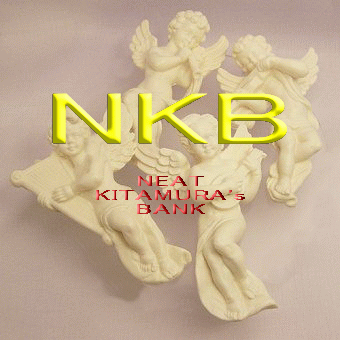

| @NKB@TOP@ | @contents | @CD@ | @shop@ | @Request@ | @Link@ |

BeethovengLeonorehoverture No.3 op.72
Beethoven Symphony No.
9 D Minor op.125
ConductFNoriaki kitamura
OrchestraFthe Slovak National Symphny Orchestra
Slovak National Singing Choir
Eva
Hornyáková
- soprano
Elena Shatokhina
- mezzo soprano
Pavol Oravec
- tenol
Peter Mikuláš
- bass
Recording placeFMusikverein Grosser Saal in Wien
Recording dateFNovember 20 2020
@


used score F BÄRENREITER URTEXT TP907@iSymphony
No.9 in
D minor op.
125j
@@@@ @@Slovak
Filharmoni's Archiv igLeonore h overture No.3 op.
72)
recording sound source F It was recorded to the most up-to-date model i1bit recorder of i-Quolia Co.j by Japanese engineer Mr. Hiromichi Aikawa
* homepage of recording engineer
Conductorfs
comment
I made every effort to follow the composer's intent, as the same as my previous
performances.
We used
BÄRENREITER
URTEXT (original version) TP909 for Symphony No. 9.
This time, however, the orchestra used their old version and players corrected
partly with reference to the URTEXT. So it was not the same completely.
We
used parts of the Slovak Philharmonic for "Leonore" Overture No.3.
I
corrected partly with reference to the BÄRENREITER URTEXT BA8833.
Detailed
comments are omitted, since the issues and intentions of the score are the same
as before,
There is no particular reason why I selected "Leonore" Overture No.3, because it
is a well-known masterpiece. I noticed its
higher completeness as a stand-alone work than the opera "Fidelio" and other
"Leonore" overtures.
The description of the scene in which Leonore enters the
underground jail at the beginning was become slightly brighter, because of my
own exhilaration that came from my deep emotion at the first wonderful sound of
that Golden Hall. I regret a little.
I think that Fidelio's reunion etc. I
could have drawn well.
We recorded the concert in
tThe
Musikverein Grossersaal
as the 10th anniversary of NKB live. The
theme of this recording is "Freude". It is joy the same as the theme of the
symphony no.9, too. I tried to draw each joy differently. In other words,
reunion of a couple and liberation for "Leonore", Creation for symphonyfs 1st
movement, explosion of life for 2nd movement, affection for 3rd movement and
peace and friendship for 4th movement are that I emphasized as the composerfs
intention.
Symphony No. 9 is a work that I played many times. Through my
experiences; organized from minimum to maximum, the choir number was a little
too much and the balance was broken slightly, but I am convinced that it is the
best of mine.I
think the
number of
choir is desirable to be strings.
This symphony is a work that is different from other eight ones, but it is just
typical Beethovenfs. And it is
his
culmination with no doubt.
I think that he had a desire to write like Haydn's
"Creation" in his vision.
1st movement, especially the beginning, makes it emphatic. And not only that,
but also the whole composition also contains such thoughts, I think. It is no
doubt that there is full of "Freude".
Just like Haydn's work, it is full of joy.
2nd movement is performed with long repeat in the middle that is rarely in
general.
The most impressive timpanifs motive is
usually played p for the fifth time,
but I remained f as per the score.
I think only Otto Klemperer played
f.
This part
does not
be
described
p
in
any
score, including
autograph.
It is maybe a custom from the past.
guess it probably followed
the Furtwänglerfs performance.
No one would have been able to
offend his way of performance.
It is the time to break that
spell, isn't it?
I think Beethoven is
absolutely correct.
3rd movement is a bit squeezed. The 2nd movement of "Pastrale" is reminded.
But it's a bittersweet memory not like it
used to be sweet in gPastraleh. And
it goes happier gradually, while holding
loneliness at last.
4th movement is a symphony and not a vocal song,
otherwise
this movement might be a cantata and
impress independently.
This time, the choir should have been a
little smaller, I think.
Lyrics dominate the song.
However, we can understand composerfs feelings better in the instrumental music
alone.
I think that just the music of instrument
may be able to make a good finale.
conductor Noriaki Kitamura
@
|
| @ |
|
There are two media of recording this time.
Above #107 is SACD/CD
Hybrid
2Discs.
You can listen by usual CD player and enjoy more high quality
sound by SACD player.
4000 yen (+ tax)
Bellow #407
is
7&5 ch. soround, stereo and rear stereo-maic.
of DSD data.
for sail by aiquaria shop
@
@order
Please write your address, name, telephone number and number(s) of order for
#102 Beethoven No. 7 SACD/CD - disc(s)
#402 Beethoven No. 7 SACD/CDDVD-ROM - set(s)
@#301 Schumann - disc(s)
then please mail to
@
‘@you can get at the store bellow@‘
@
MAILF@nkbankga@yahoo.co.jp
copyright 2010 NKB gen. as. All right reserved
@
@